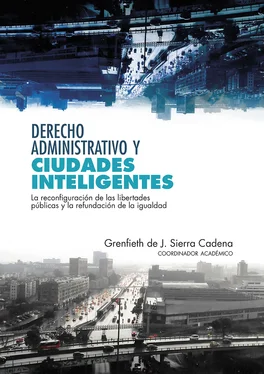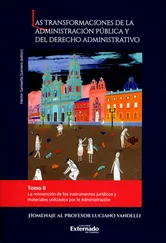1 ...6 7 8 10 11 12 ...18 This objective, however, should not be pursued only by cities, but more generally by communities. The reduction of the carbon footprint or the will to benefit from the smartness of the smart green projects should not be reserved to cities and urban areas but should also be a part of the development strategies of rural areas. For this reason, the expression “Smart green communities” is further appropriate.
Because all communities (urban and rural communities) have to face the new context created by the arrival of the Internet and the development of ICTs in a digital era, we will deal with smart green communities, and not only about smart green cities. Our society, called the information society, corresponds to a new era where data are at the core of the ecosystem. Because of their value for the economy, companies aim to collect more and more data in order to develop their business. Because it helps understand human behavior, governments also use and reuse data. Of course, some governments use data for mass surveillance, but the same also collect data in order to improve our living conditions, in particular at the local level.
Because local governments are the closest layer of government to local people, they are more sensitive to the daily lives and well-being of their populations. Thus, one might not be surprised to see that communities try, in a digital age, to use ICT tools in order to become smarter and to implement better public policies regarding environmental sustainability issues (§ 1). Making communities smarter and greener should, however, not be regarded as an aim in itself. The objective is above all to favor better lives within an environmentally friendly framework that respects fundamental rights against the uncontrolled collect, use and reuse of our personal data (§ 2).
§ 1 – Smarter Communities for Better Green Public Policies
A. Better Green Public Policies for Responding to Current Issues
Imagine a country where 97 % of the territory is covered by water, but only 1 % is potable 10; a country where more than one in six people cannot access to drinking water 11, knowing that everyone on Earth needs every day at least 20 to 50 liters of clean and safe water to ensure its daily subsistence 12; a country where the water cost has increased by 30 % in 5 years 13; a country where 25 persons out of 100,000 die every year because of diseases caused by the low-quality water while others suffer from serious diseases for the same reasons 14.
Imagine a country where 22 % of the population cannot access to electricity; a country where 2 million people die every year because of the low quality of the energy for cooking 15; a country where nevertheless the global electric consumption has been multiplied by more than 3 in almost 4 decades and is still in a constant growth; a country where the global energy demand will grow by 37 % by 2040 16and where the global electricity demand will double by 2050.
Finally, imagine a country where the emission of carbon dioxide has increased by 52 % in 22 years; a country where almost 25 % of the CO 2emissions in the world come from electricity, and 20 % from transportations 17.
We all know this country. In reality, these features are not those of a country, but those of the Earth. As explained previously, the access to water is more and more difficult for a part of the population as the price is constantly increasing. This assertion is true both for developing countries and developed countries as the Rickards Real Cost Water Index shows. According to this index, calculated by IBM in local currency, the Water cost has increased by 32.9 % from the beginning of 2008 to the end of 2013 (+ 16.9 %, if calculated in USD). As a comparison, in the 4 thquarter of 2013, water costs $0.34 in Manila (+ 28.3 % since 2008, if calculated in local currency), $0.97 in Sao Paulo (+ 32 % since 2008, if calculated in local currency), $1.61 in Singapore (+ 50 % since 2008, if calculated in local currency), $1.97 in San Antonio (+ 22 % since 2008, if calculated in local currency), or $2.26 in London (+ 33.7 % since 2008, if calculated in local currency 18.
In addition to the water price increases, most consumers also face higher prices for electricity, when they have access to this energy. It should be recalled, in this respect, that if 78 % of the population in the world have access to electricity 19, 1.6 billion inhabitants have no access today to electricity (80 % of the rural population in Africa), and 2 billion people still do not have a sufficient energy to live in the dignity 20. Yet, the global electric consumption has been multiplied by 3.2 in 38 years from 6129 TWh in 1973 to 20,915 TWh in 2012 21, and is expected to continue to do so in the coming years. According to the International Energy Agency, if the global energy demand is multiplied by 1.5 by 2050, the global electricity demand will double because of the population growth and the new needs of developing countries in terms of energy consumption and more especially of electricity 22.
At the same time, the global population could suffer from an increase of carbon dioxide emission. Regarding this evolution, we should point out that, in the world, the carbon dioxide emission has increased from 22.7 billion tons in 1990 to 34.5 billion tons in 2012 23, and that this rise should continue in the future if nothing is done. It is also important to underline that 60 % of CO 2emissions in the world are related to the sector of the energy, among which 40 % come from the electricity sector and 20 % from the transportation sector 24. If China is the biggest emitter of carbon dioxide in the world with 9.86 tons out of 34.5 tons in 2012 (29 %), this problem is not only a matter of developing countries as the USA emitted 5.19 tons (15 %) and the European Union 3.74 tons (11 %) the same year 25. Finally, it should be noted that the energy supply causes 26 % of carbon dioxide emission in the world. Transport is responsible for 13 % of this emission, residential and commercial buildings for 8 %, and waste and wastewater for 3 % 26.
In all these sectors, smart green communities can play a role to reduce these emissions. In other words, for all the reasons mentioned above, we should improve the efficiency of green public policies. Smart communities can help reach this goal as they are nearly always linked to green policies. Indeed, most of the cities that intend to become smarter also develop green policies or try to improve the efficiency of their environmental public policies. For instance, Qui Aijun explains that in China, the construction of smart cities always integrates an ecological plan in order to fight against the traffic congestion, or to reduce the environmental pollution. In Nanton, like others Chinese cities, ICTs are used, “to optimize the infrastructure, maximize the use of natural resources and build a harmonious cultural environment with the goal of becoming a low-carbon Smart City” 27. This feature is not only available in China, but is common to other smart communities in the rest of the world. So, developing smarter communities help reduce greenhouse gas emissions, and favors, therefore, a better life.
B. Smarter Green Communities for Better Lives
Smarter green communities help improve our lives in at least two different ways. First, developing smart communities favors the effectiveness and efficiency of local green policies. The result is not only to clean up the air or the water; it is also to reduce the cost of public policies or individual invoices.
For instance, reducing energy demand by increasing the efficiency and conservation of electricity in homes, in businesses, in industries or in governmental buildings do not only favor the reduction of the greenhouse gas emissions, but is also to decrease the customer’s electricity bill or the public spending in the latest example.
Читать дальше












